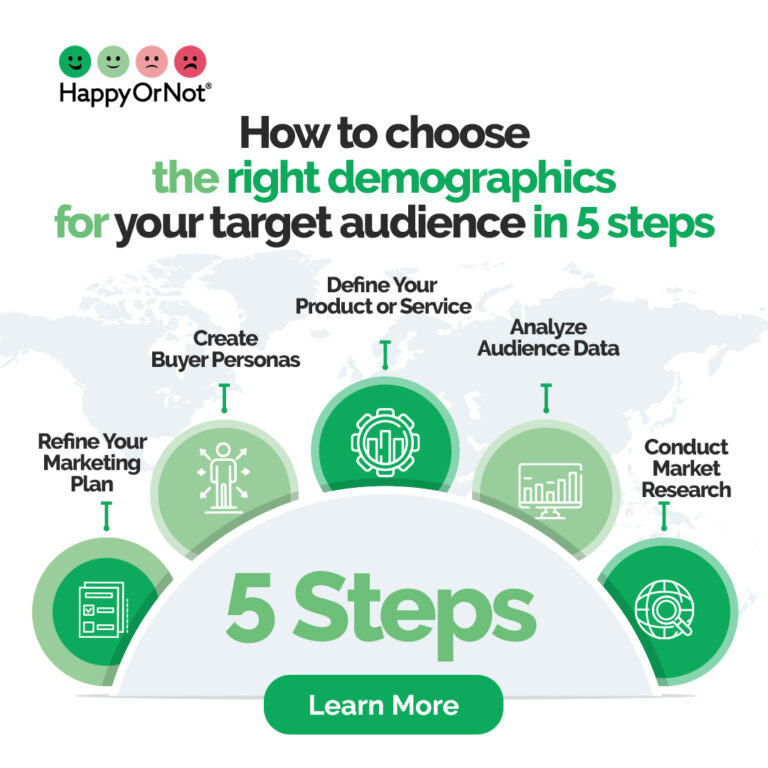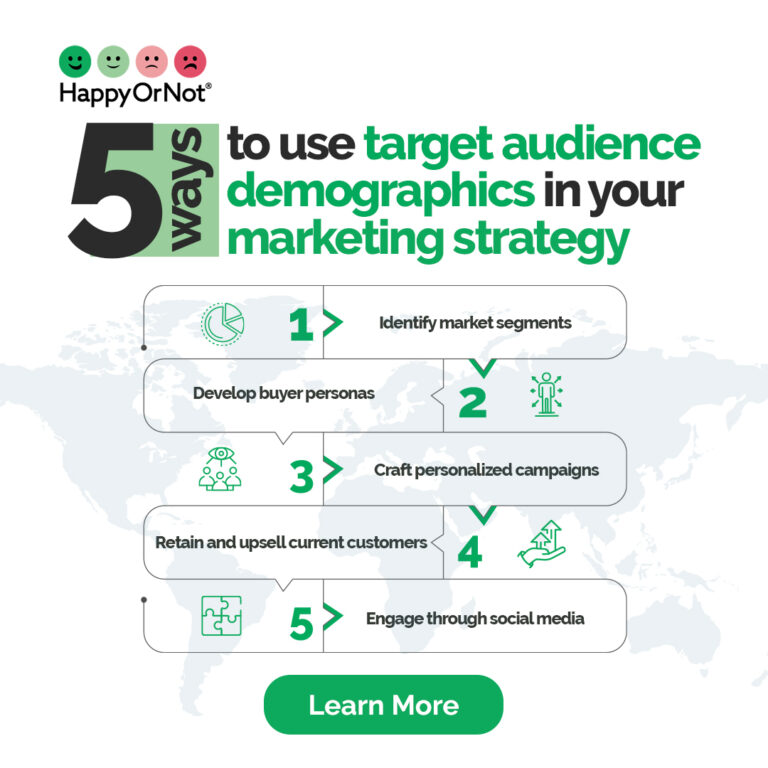What are target audience demographics and how to use them?
What are target audience demographics and how to use them? There’s never been a successful business without a clearly defined target audience demographics.
That is because when it comes to selling, customers like to feel their products or services are tailored specifically to them.
And to make them feel this special, you not only need to know what are target audience demographics but also how to leverage this knowledge to bring them the perfect answer to their biggest pain points.
Wondering how to do that? Well, in this article, we’ll explore the importance of target audience demographics in marketing and provide practical tips on leveraging them effectively.
Here’s what we’ll cover:
- What are target audience demographics?
- How to choose the right demographics of target audience in 5 steps
- 5 ways to use target audience demographics in your marketing strategy
- 5 examples of customer demographics for target markets
- And more
What are target audience demographics?
Target audience demographics encompass the distinct attributes and particulars of the desired customer base that a business wants to engage through its marketing initiatives, such as age, gender, and location.
Understanding these measurable characteristics allows companies to define their target demographic and tailor their marketing strategies and campaigns accordingly, ensuring their marketing messages resonate with the specific audience segments they aim to reach.
HappyOrNot Demographics
HappyOrNot Demographics provide valuable insights into target customers’ specific characteristics and preferences. Businesses can identify their audience’s key characteristics and shared demographics by analyzing demographic information and customer data.
This data-driven approach allows companies to identify potential customers and tailor their marketing campaigns to increase purchase intention. By understanding the shared characteristics of their customers and utilizing market research, businesses can attract more potential customers and strengthen relationships with their existing ones.
How to choose the right demographics of target audience in 5 simple steps
Selecting the right demographics of a target audience is crucial for effective marketing campaigns. Here are 5 steps to help you make the right choices:
- Step 1: Define your product or service
Understand your product or service’s specific features, benefits, and value propositions. This will help you identify the target demographics most likely to be interested in your offer. - Step 2: Analyze audience data
Utilize analytics tools like Google Analytics and social media analytics to dig deeper into the demographic details of your existing customers. Look for trends in age, gender, income level, family size, and other characteristics to identify the typical customer profile. - Step 3: Conduct market research
Use focus groups, surveys, and interviews to gain more insights into different demographics and preferences. This will help you understand your target audiences’ needs, motivations, and behaviors. - Step 4: Create buyer personas
Develop well-defined buyer personas based on your demographic profiles and other identified characteristics. These personas represent your ideal target market segments and will guide your marketing efforts. - Step 5: Refine your marketing plan
With a clear understanding of your target demographics and buyer personas, tailor your marketing campaigns to appeal to specific groups. Craft compelling messages and choose the right channels to effectively reach and engage your target audience.

5 ways to use target audience demographics in your marketing strategy
Leveraging target audience demographics in your marketing strategy can significantly enhance its effectiveness. Here are 5 ways to make the most of demographic targeting:
- Identify market segments
Analyze your audience data and segment your market based on demographic profiles. This enables you to customize your marketing campaigns to specific groups with shared characteristics, ensuring more relevant messaging and higher engagement, as well as provides you the capability to verify if your sales and marketing efforts are resonating with your target audience. - Develop buyer personas
Create well-defined buyer personas that represent your target demographics. These fictional representations of your ideal customers help you understand their needs, motivations, and behaviors, enabling you to tailor your marketing efforts accordingly. - Craft personalized campaigns
Utilize the demographic profile insights to customize your marketing campaigns for specific groups. By addressing their unique preferences and pain points, you can deliver more compelling messages and experiences that resonate with your target audience. - Retain and upsell current customers
Understand the demographic profiles of your existing consumers and leverage this knowledge to enhance customer retention and upselling strategies. You can create targeted offers and loyalty programs that resonate with your current customer base by identifying common characteristics and preferences. - Engage through social media
Utilize social media platforms to reach specific demographics based on their profiles and interests. Craft content that aligns with their preferences and use social media advertising to target specific groups within the same market.

5 examples of customer demographics for target markets
When it comes to targeting specific markets, understanding customer demographics is essential. Here are 5 examples of customer demographics for target markets:
- Market segment
One example of a customer demographic is a market segment of tech-savvy millennials who are early adopters of new gadgets and digital services. They’re active on social media platforms and prefer personalized digital experiences. - Specific group
Another example is a specific group of single women in their 30s who prioritize self-care and wellness. They’re interested in fitness, beauty, and mindfulness products and services and often seek social media influencers’ recommendations. - Buyer persona
A buyer persona for a luxury travel agency could be an affluent couple in their 50s with grown-up children. They have a high disposable income and value unique, exclusive travel experiences that cater to their sophisticated tastes. - Average consumer
An example of an average consumer demographic is budget-conscious families with two children. They prioritize affordability and value in purchasing decisions and actively seek discounts and promotions. - Social media profiles
A customer demographic can be defined by social media profiles, such as fashion-forward individuals who follow fashion influencers and engage with brands known for trendy clothing and accessories.
Conclusion
Target audience demographics play a crucial role in shaping effective marketing strategies. Using customer feedback platforms and tools powered by AI to understand the specific characteristics of your ideal customer base allows you to tailor your messaging and campaigns to resonate with your target audience.
By analyzing demographic details, creating buyer personas, and leveraging market research, you can identify market segments, craft personalized campaigns, retain and upsell current customers, and engage through social media.
Frequently asked questions
What are target audience demographics and why are they important for marketing?
Target audience demographics are the specific characteristics of your ideal customer base. They’re essential for marketing because they help you understand your audience’s preferences, behaviors, and needs.
How can I segment my audience based on their demographics and tailor my strategies accordingly?
You can segment your audience based on demographics like age and gender. Tailor your strategies by creating buyer personas and crafting personalized campaigns for market segments.
What marketing advantage do target demographics provide?
Target demographics provide a marketing advantage by allowing you to focus on the specific audience segments most likely to be interested in your product or service.
What marketing purposes do target demographics serve?
Target demographics serve marketing purposes by helping you deliver tailored messages, create effective campaigns, and increase customer engagement and conversion rates.
Can target demographics help achieve company plans?
Yes, target demographics can help achieve company plans by aligning marketing strategies with the needs and preferences of the intended audience.
How can you use target demographics to increase marketing campaign success?
Use target demographics to increase marketing campaign success by understanding your audience’s characteristics, preferences, and behaviors. Tailor your campaigns to resonate with specific market segments for better results.